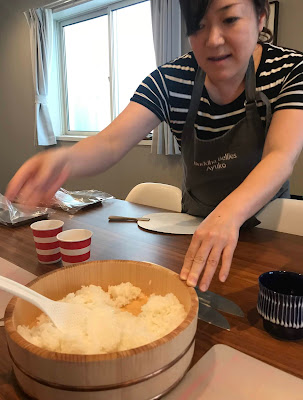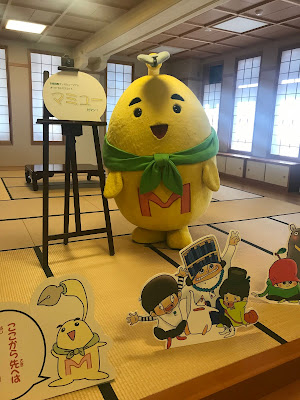Drawn Outsider: an interview with illustrator and author Shaun Tan
Between words and images, illustrator/writer Shaun Tan has found a place for himself and scored some serious awards. George Dunford traces his rise.
It’s crowded and hot in a small chamber of Newcastle Town Hall for Shaun Tan’s illustration workshop at the National Young Writer’s Festival. The audience spills out the door listening to his thin dry voice: a napping pair of emo kids leaning on each other twitch with dreams fuelled by the writer/illustrator sketch of a Donnie Darko-esque bunny. The two-hour workshop has run an hour over but Tan keeps scratching at the sweet-yet-menacing rabbit on the flipchart. Every eye is still on him and every ear is listening and every face smiling – even as they doze.
This crowd has grown up with Tan from studying The Rabbits (his colonisation collaboration with John Marsden) to his recent wordless graphic novel, The Arrival. “That’s the disturbing thing,” Tan chuckles as the small crowd disperses in search of water, “when people come up to me and say ‘Yeah, we did the Rabbits in school’ and I think ‘Holy shit, how old does that make me?’”
As he’s packing up his charcoal, he looks at the picture, self-critically. “I don’t like pictures to be entirely finished so there’s a gap of recognition there. That’s where the reader has to come in and fill the gap,” he explains. Perhaps that’s part of the success of The Arrival which sold well as a kids’ book in Australia yet also charmed the NSW Premier’s Literature Award and was marketed overseas as an adult graphic novel. “I don’t really illustrate for kids, but in the back of my mind I do want to do something that a kid can relate to. It’s like a good guide for any artistic project – if a kid can relate to it… then you’re probably on the right track.”
In conversation Tan reminds me of an iPod – compact, neat and voicing the most wondrous things. He shuffles easily between kids and adults, text and pictures, high and low art (“A lot of the best illustration is actually in fine art, but I don’t see there being much difference between illustration and gallery paintings”). At some point while creating The Arrival, Tan decided to drop the words and tell the story of a stranger in a stranger land using only pictures. “The moment I started introducing language into it, it was like dropping a pebble into a still pond. It just created too much ripple and other interpretation. It was talking too loudly when the words were there. Speaking to the reader too loudly and I really wanted people to be able to bring their own reading to it.”
Tan’s style is essential. Not only do stories dictate their form, but objects express their characters to him. Growing up as a shy Chinese-Malaysian kid in Perth, Tan’s drawing was “a way of connecting”. “I’m not sure which came first – the obsession with drawing or the shyness. One can lead to the other, because it’s a kinda solitary activity, whereas if my obsession was with breakdancing it would be a little bit different.”
Tan is more at home expressing himself through his work. Speaking at this workshop “feels very unnatural to me, because the reason I got into illustration is that I felt I had something to contribute, but I didn’t want to perform at all.” Tan used himself as a model for The Arrival’s central character but the resemblance is not just physical. “It was a very self-referential thing about the artist communicating directly through pictures, because he can’t talk.”
When Tan’s adolescent drawing skills peaked (“I could draw things very accurately, not quite photographically, but near enough.”) he found himself getting creatively bored. “I was kind of reaching a deadend and it was like ‘Where do I go from here?’” The breakthrough came when he began to react with his drawings. He recalls seeing a grey boulder that “felt pinkish, pink-blue… maybe the temperature of those colours matched the rock”. His illustration style began to concentrate on the character of what he saw around him. Even now he points to a window and thinks about lengthening it in a sketch to make it more meaningful. “I feel more directly connected to… the somethingness of a thing. I can get into it really easy with drawing, with writing I’m grappling for the phrase or the words.”
Never one to stand still creatively, Tan is forcing himself to wrestle with words for his next book of illustrated fiction, Tales of Outer Suburbia. The book is a collection of short stories based on growing up in Perth’s northern suburbs, “in some ways a place of great boredom” which Tan has re-imagined. One story features a water buffalo that takes up residence in a spare block and acts as a neighbourhood agony aunt. It’s a Tan twist on the everyday, embellished to become supernatural.
As Tan races off for his next festival appearance with historian Henry Reynolds who Tan used as a reference for The Rabbits, he’s already thinking of illustrating again. “It feels real true when I get a painting right,” he smiles, “like it’s truer than anything I’m ever going to say or even do as a person.”
This piece originally appeared in The Big Issue.
It’s crowded and hot in a small chamber of Newcastle Town Hall for Shaun Tan’s illustration workshop at the National Young Writer’s Festival. The audience spills out the door listening to his thin dry voice: a napping pair of emo kids leaning on each other twitch with dreams fuelled by the writer/illustrator sketch of a Donnie Darko-esque bunny. The two-hour workshop has run an hour over but Tan keeps scratching at the sweet-yet-menacing rabbit on the flipchart. Every eye is still on him and every ear is listening and every face smiling – even as they doze.
This crowd has grown up with Tan from studying The Rabbits (his colonisation collaboration with John Marsden) to his recent wordless graphic novel, The Arrival. “That’s the disturbing thing,” Tan chuckles as the small crowd disperses in search of water, “when people come up to me and say ‘Yeah, we did the Rabbits in school’ and I think ‘Holy shit, how old does that make me?’”
As he’s packing up his charcoal, he looks at the picture, self-critically. “I don’t like pictures to be entirely finished so there’s a gap of recognition there. That’s where the reader has to come in and fill the gap,” he explains. Perhaps that’s part of the success of The Arrival which sold well as a kids’ book in Australia yet also charmed the NSW Premier’s Literature Award and was marketed overseas as an adult graphic novel. “I don’t really illustrate for kids, but in the back of my mind I do want to do something that a kid can relate to. It’s like a good guide for any artistic project – if a kid can relate to it… then you’re probably on the right track.”
In conversation Tan reminds me of an iPod – compact, neat and voicing the most wondrous things. He shuffles easily between kids and adults, text and pictures, high and low art (“A lot of the best illustration is actually in fine art, but I don’t see there being much difference between illustration and gallery paintings”). At some point while creating The Arrival, Tan decided to drop the words and tell the story of a stranger in a stranger land using only pictures. “The moment I started introducing language into it, it was like dropping a pebble into a still pond. It just created too much ripple and other interpretation. It was talking too loudly when the words were there. Speaking to the reader too loudly and I really wanted people to be able to bring their own reading to it.”
Tan’s style is essential. Not only do stories dictate their form, but objects express their characters to him. Growing up as a shy Chinese-Malaysian kid in Perth, Tan’s drawing was “a way of connecting”. “I’m not sure which came first – the obsession with drawing or the shyness. One can lead to the other, because it’s a kinda solitary activity, whereas if my obsession was with breakdancing it would be a little bit different.”
Tan is more at home expressing himself through his work. Speaking at this workshop “feels very unnatural to me, because the reason I got into illustration is that I felt I had something to contribute, but I didn’t want to perform at all.” Tan used himself as a model for The Arrival’s central character but the resemblance is not just physical. “It was a very self-referential thing about the artist communicating directly through pictures, because he can’t talk.”
When Tan’s adolescent drawing skills peaked (“I could draw things very accurately, not quite photographically, but near enough.”) he found himself getting creatively bored. “I was kind of reaching a deadend and it was like ‘Where do I go from here?’” The breakthrough came when he began to react with his drawings. He recalls seeing a grey boulder that “felt pinkish, pink-blue… maybe the temperature of those colours matched the rock”. His illustration style began to concentrate on the character of what he saw around him. Even now he points to a window and thinks about lengthening it in a sketch to make it more meaningful. “I feel more directly connected to… the somethingness of a thing. I can get into it really easy with drawing, with writing I’m grappling for the phrase or the words.”
Never one to stand still creatively, Tan is forcing himself to wrestle with words for his next book of illustrated fiction, Tales of Outer Suburbia. The book is a collection of short stories based on growing up in Perth’s northern suburbs, “in some ways a place of great boredom” which Tan has re-imagined. One story features a water buffalo that takes up residence in a spare block and acts as a neighbourhood agony aunt. It’s a Tan twist on the everyday, embellished to become supernatural.
As Tan races off for his next festival appearance with historian Henry Reynolds who Tan used as a reference for The Rabbits, he’s already thinking of illustrating again. “It feels real true when I get a painting right,” he smiles, “like it’s truer than anything I’m ever going to say or even do as a person.”
This piece originally appeared in The Big Issue.




Very lovely writing, George. Thank you. Must rush out and buy The Arrival, being newly arrived myself
ReplyDelete